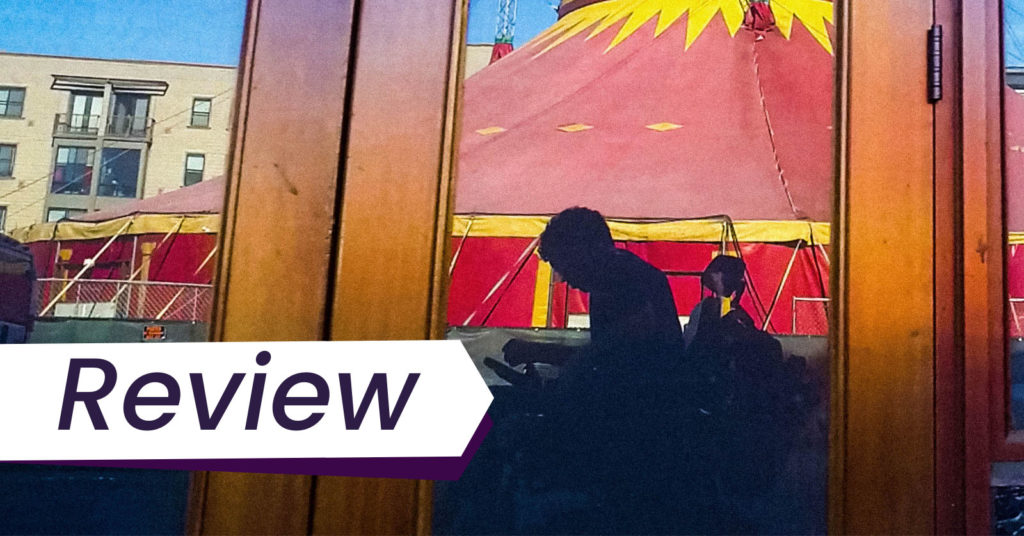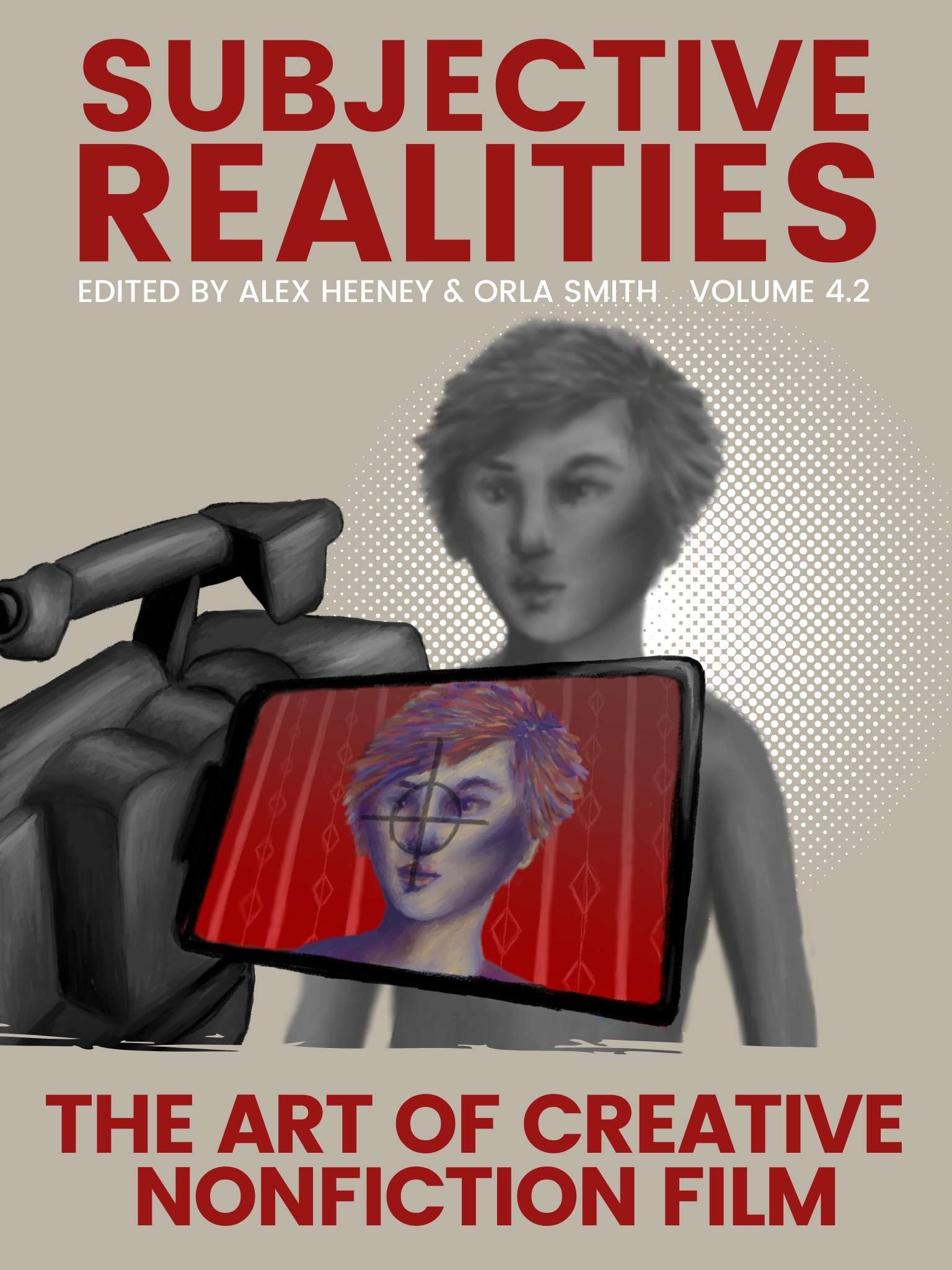Reid Davenport’s personal essay film, I Didn’t See You There, radically questions the way disabled people have historically been presented in the media.
Read all our Sundance coverage so far.

Discover one film you didn’t know you needed:
Not in the zeitgeist. Not pushed by streamers.
But still easy to find — and worth sitting with.
And a guide to help you do just that.
In his “Meet the Artist” introduction on the Sundance YouTube channel, documentarian Reid Davenport describes his film I Didn’t See You There as important because “it’s an unapologetically disabled film, in its aesthetics and its seeming unconventionality.” Sundance has a history of programming films explicitly about disability, but often ones that still perpetuate ableism, such as Gleason (2016), which was about an incredibly privileged disabled man, or CODA (2021), which centred a non-disabled protagonist. So it was a shock and a delight to find I Didn’t See You There in this year’s programme, a film made by a disabled filmmaker that radically questions the way disabled people have historically been presented in the media. Davenport doesn’t just aim to tell the audience about his experience as a disabled person, but to show us the way he sees the world, using techniques that are rarely implemented on screen.
I Didn’t See You There is, at its core, an essay film, and one that may challenge viewers who aren’t inclined toward more experimental, image-rather-than-story based forms of cinema. As one of those people, I was also challenged by the film, but I haven’t been able to stop thinking about it since. The film is essentially made up of short sequences from Davenport’s life, shot by a camera from his point of view, either with him holding the camera, or with the camera attached to his wheelchair. The scenes range from mundane activities like pouring himself a drink, to the long journey of taking an aeroplane to visit home, which involves waiting for accessibility aids to arrive so he’ll be able to exit the plane. Occasionally he will interject with voiceover, or we’ll hear him speaking to someone from behind the camera. The film encourages the viewer to see through Davenport’s eyes and to hear what he hears. The images he presents take a bit of getting used to, because for example, we’re not accustomed to watching film images shot from the height of a wheelchair, or to see the camera shake rapidly as it does when Davenport holds it, as he cannot hold it still.
In voiceover, Davenport discusses how he previously made a film about what it was like to grow up with a disability, which was all about how the world saw him. Now, with I Didn’t See You There, he says he hopes to do the reverse: make a film about how he sees the world. The pitching of a circus tent across the street of his Oakland apartment provides interesting context for the project. The circus, Davenport muses, has traditionally been a place for othered bodies to be gawked at; Davenport reflects on how that dynamic continues today, both in his everyday life (being stared at on the street), and in his filmmaking. (An ironic detail is the fact that P.T. Barnum, who popularised the circus in America, hailed from Davenport’s hometown of Bethel, Connecticut.) Davenport wonders if, by making films about himself, featuring himself, he has chosen a job in which his body is on display in a way he’s uncomfortable with. I Didn’t See You There is an attempted remedy.
Davenport recontextualises shaky images or images shot from unusual angles, which might otherwise be considered flaws in cinematography, as an authentic expression of his viewpoint. These images, and the sounds that accompany them, are also often very beautiful. Davenport includes many sequences of himself travelling around Oakland in his wheelchair, representing the city with an attentive eye and a rich, detail-focused sound design. Particularly enthralling are sequences in which he points the camera at one wheel on his wheelchair so that we can watch the many different textured surfaces the wheel passes over, and listen to their distinctly different sounds. This, I feel, is part of what Davenport means when he calls I Didn’t See You There “an unapologetically disabled film in its aesthetics.” It’s an observational documentary that observes and listens to details and images that are not experienced by non-wheelchair-users. Over seventy-four minutes, we make these observations along with Davenport. On the flip side, we also experience the unwanted gaze of passersby, as well as the feeling of invisibility when Davenport, on multiple occasions, attempts to cross a crosswalk only to be cut off by a car that doesn’t care to notice him.

While I Didn’t See You There is not a particularly neatly-structured or organised film (not that it necessarily aims to be), it is an essential new text in the evolving conversation about depictions of disability on screen. While incredibly different formally, it feels of a piece with another creative nonfiction film in this year’s Sundance program, the NEXT film Framing Agnes, which discusses trans representation on screen. Both filmmakers, Reid Davenport and Chase Joynt, eschew the trite, conventional, and often offensive ways that the marginalised group they belong to are often portrayed on film. They use experimental nonfiction techniques to open up a conversation about how media depicts disabled people and trans people, respectively.
They also pose questions about the dangers of depicting at all. Framing Agnes proposes that some of the gaps in documented trans history could be viewed as a positive: not being seen might mean that that person was able to live in peace. Conversely, late into I Didn’t See You There, Davenport says, “I hope this will be my last personal film.” He questions the very film he’s making, and how in order to make a living in the creative arts, he’s felt pressured to put his body in the spotlight. Even here, where his body is not visible, it is still at the centre of the conversation.
Even in a review of the film, like this one, it’s hard not to note how novel Davenport’s direct perspective is as a filmmaker with a disability, because it really is something we rarely see in film. The insights in Davenport’s voiceover made me think about how, even when making a film simply about his individual perspective on the world, Davenport cannot avoid making a film that people will take to be about A Disabled Person’s Perspective writ large, because there are few others films by filmmakers with disabilities to compare his work to. (As a side note, we do recommend Jennifer Brea and Takiya Coley’s Unrest as another must-see example.)
Davenport, who runs the nonprofit Through My Lens, which aims to amplify the voices of people with disabilities, is evidently passionate about furthering the conversation around disability on film. But that doesn’t mean it’s not exhausting to mine your own life in order to do so. I hope that, if he so wishes, I Didn’t See You There can be Davenport’s last personal film. But I also hope he doesn’t stop making films that break cinematic convention in order to find new ways to tell stories that are rarely told.
We want to make sure you don’t miss out on any opportunities to watch films like Reid Davenport’s I Didn’t See You There at virtual cinemas, VOD, and festivals throughout the year.
Subscribe to the Seventh Row newsletter to stay in the know.
Subscribers to our newsletter get an email every Friday which details great new streaming options in Canada, the US, and the UK.


